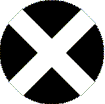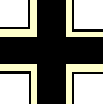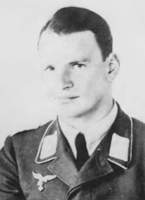Germany


Oberleutnant Oskar Henrici
Germany


Oberleutnant Oskar Henrici

13 June 1914 – 13 November 1936
Oskar Henrici was born on 13 June 1914 in Berlin.
He received fighter training with Fliegergruppe (S) Schleissheim.
Oskar Henrici took part in the Spanish Civil War as a member of the Legion Condor.
By the beginning of October 1936 six of the new batch of He 51s had arrived in Spain, together with ten volunteer pilots and more mechanics - ”a necessary and welcome strengthening”, as Oberleutnant Herwig Knüppel described it. ”Just like we had done two months previously, they had put together their He 51 single-seaters in Seville, for which we soon almost fell around their necks with joy.”
This latest batch of pilots comprised Oberleutnante Dietrich von Bothmer, Henrici and Günther Radusch, Leutnante Kurt von Gilsa, Paul Rehahn and Henning Strümpell and Unteroffiziere Willi Gödecke, Kowalski, Ernst Mratzek and Erwin Sawallisch. It was now possible to split the Jagdstaffel into two elements – five aircraft under Oberleutnant Hannes Trautloft headed north on 5 October to León to escort supply and bombing missions around the Nationalist enclave at Oviedo in Asturias, while the others, under Oberleutnant Kraft Eberhardt, went to Barahona and eventually on to Zaragoza. Communications between the two Ketten would be maintained by a solitary Fokker F VII that had been assigned to the Staffel.
By the middle of October, more Heinkels had arrived, and the strength of the fighter Staffel increased to 14 He 51s.
On 19 October 1936, at Zaragoza, the German He 51s made their presence felt when a Kette formed of Leutnant Wolf-Heinrich von Houwald, Leutnant Henning Strümpell and Oberleutnant Henrici was attacked by 13 Republican aircraft, but shot down five of their number on the Alcubierre, northeast of Zaragoza. Oberleutnant Henrici claimed a Ni-H.52C, a Breguet XIX and a Fokker F VII, while Leutnant von Houwald and Leutnant Strümpell each accounted for a Nieuport. Oberleutnant Herwig Knüppel recalled:
“Henrici alone had shot down three. He rammed one of them, a Breguet 19, on its wing with his undercarriage. Afterwards, he said quite simply, “Well, after that he really ‘fell out of his slippers’”. Our Oskar - we all called Henrici by his first name - was able to fetch the devil out of hell, if it came to that. And our mechanics and armourers were as pleased as we were about this success. They had, again and again, untiringly put the machine guns and engines in order, and had thereby helped the pilots to achieve success.”
In the afternoon on 13 November, nine He 51s from the German Legion Condor took off from Ávila to provide escort for five German-flown Ju 52/3ms and three He 46s, which were to attack the Republican positions on the west bank of the Manzanares. It seems that at least six CR.32s also were present.
At 15:00, twelve I-16 type 5 “Moscas” and twelve I-15s intercepted them over Madrid. The I-16s were led by the Russian squadron leader kapitan Sergey Tarkhov (’Antonio’) (he was the commander of the first and newly created escuadrilla of I-16s) in their first combat while the I-15s (Escuadrilla Palancar) were again led by starshyi leitenant Pavel Rychagov. All Republican pilots taking part in this combat were Russians.
The Republican fighters dove on the Henrici Kette. Unteroffizier Ernst Mratzek was able to claim an I-16 as it dove past. Oberleutnant Henrici claimed a Russian fighter in the same way as the He 51s dove into the clouds. A bitter dogfight raged over Madrid at 1,500 meters. The Knüppel Kette dove into a cloud, reversed course in a steep turn and re-emerged below the Republican aircraft. Oberleutnant Herwig Knüppel and Unteroffizier Erwin Sawallisch claimed two I-15s; Sawallisch made his way home with some difficulty with shot-up tail surfaces. The Eberhardt Kette had remained above the bombers as top cover. Oberleutnant Kraft Eberhardt collided with an enemy fighter he had shot down and was killed when his fighter crashed to the ground at Casa de Campo; the Russian pilot was able to bail out. Oberleutnant Henrici took a bullet through the lung, but was able to land his aircraft in friendly territory at Alcorcon. As he left his aircraft, however, he collapsed and died. The German Staffel became completely scattered, each pilot seeking cover in cloud and making his own way back to Avila. Leutnant Henning Strümpell and Leutnant Dietrich von Bothmer reported the destruction of two further I-15s.
Henrici was probably shot down by leitenant Sergey Chernykh, (I-16 in Escuadrilla Kolesnikov). It seems that Eberhardt collided with Tarkhov since it’s reported that he single-handed fought against a number of He 51s before being forced to bail out after a collision. While hanging in his parachute, Republican soldiers mistook him for Nationalist pilot and opened fire, hitting him six times. Tarkhov landed in Madrid but was attacked by the public because they thought he was a German. He died of his injuries at Gómes Ulla hospital on 23 November. This led General Miaja to the issue following order the next day:
“Any aviator who jumps from his aircraft using a parachute is out of the battle and, therefore, I order all forces defending Madrid not to shoot at parachutists under any circumstances. They may be our own men, but, if they prove to be enemies they can provide us with valuable information, which will be of great use for our operations.”A second Russian pilot was killed when starshiy leitenant Vladimir Mikhailovich Bocharov (’Jose Galarza’), after claiming a He 51, was wounded and made a forced-landing in enemy territory with his I-16 “Black 9”. He died of wounds or was killed by Nationalists; according to Russian sources, the next day a wooden box was dropped by an enemy aircraft. When opened it was found to contain the mutilated corpse of Bocharov (who was a detachment leader in Escuadrilla Tarkhov).
“13 November 1936 was the blackest day for the Jagdstaffel Eberhardt. We flew in the afternoon as escort for the Kampfstaffel of Oberleutnant von Moreau, starting out from Ávila and heading to Madrid. Following the second bombing run, we were attacked by around 24 low-winged and biplane fighters (Ratas and “Curtisses”) from above on the eastern border of Madrid at an altitude of between 1200-1500 metres. It developed into an exceedingly hard air battle.”Leutnant Wolf-Heinrich von Houwald recorded:
“On Friday, 13 November 1936, we encountered the Ratas for the first time and a wild melee resulted. We downed five of them, but what were these victories when compared with the loss of our Staffelführer? This only served to show that our good old He 51s were too slow compared with the new Ratas - they could play with us as they wanted. Furthermore, the Soviet “Martin Bombers” [Tupolev SB], which were arriving daily, were 50 km/h faster than us, and the people were scared of them. Feverishly, we waited for the Bf 109s to arrive from Germany.”Following Eberhardt’s death, Hauptmann Knüppel became the new Staffelkapitän. Eberhardt and Henrici were awarded a posthumous Cruz Laureada de San Fernando. This was the He 51s first combat with Soviet fighters.
At the time of his death, Henrici was credited with 3 biplane victories.
On 6 June 1939, several of the German veterans that served in Spain was decorated with the Spanienkreuz in Gold mit Brillanten for their service in Spain. This included Kraft Eberhardt (posthumous), Harro Harder, Eduard Neumann and Henrici (posthumous)
Claims:
| Kill no. | Date | Time | Number | Type | Result | Plane type | Serial no. | Locality | Unit |
| 1936 | |||||||||
| 1 | 19/10/36 | 1 | Nieuport 46 | Unconfirmed | Heinkel He 51 B-1 | Alcubierre | J/88 | ||
| 2 | 19/10/36 | 1 | Breguet XIX | Unconfirmed | Heinkel He 51 B-1 | Alcubierre | J/88 | ||
| 3 | 19/10/36 | 1 | Fokker F.VII | Unconfirmed | Heinkel He 51 B-1 | Alcubierre | J/88 | ||
| 13/11/36 | 15:00- | 1 | I-15 (a) | Unconfirmed | Heinkel He 51 B-1 | Madrid area | J/88 |
Biplane victories: 3 destroyed, 1 unconfirmed.
TOTAL: 3 destroyed, 1 unconfirmed.
(a) The Soviet volunteers claimed 4 He 51s while losing 4 I-16s and pilots. The German pilots claimed 2 I-16s and 5 I-15s (1 of each as an unconfirmed) while losing 2 He 51s.
Sources:
Aces of the Legion Condor – Robert Forsyth, 2011 Osprey Publishing, Oxford, ISBN 978-1-84908-347-8
Aces of the Luftwaffe
Aircrew Remembered
Luftwaffe Officer Career Summaries – Henry L. deZeng IV and Douglas G. Stankey
Russian Fighter Aces of 1914-1953 years
Soviet airmen in the Spanish civil war 1936-1939 - Paul Whelan, 2014 Schiffer Publishing Ltd, ISBN 978-0-7643-0
The Legion Condor - Karl Ries and Hans Ring, 1992 Schiffer Publishing, ISBN 0-88740-339-5
Additional information kindly provided by Alfredo Logoluso.


